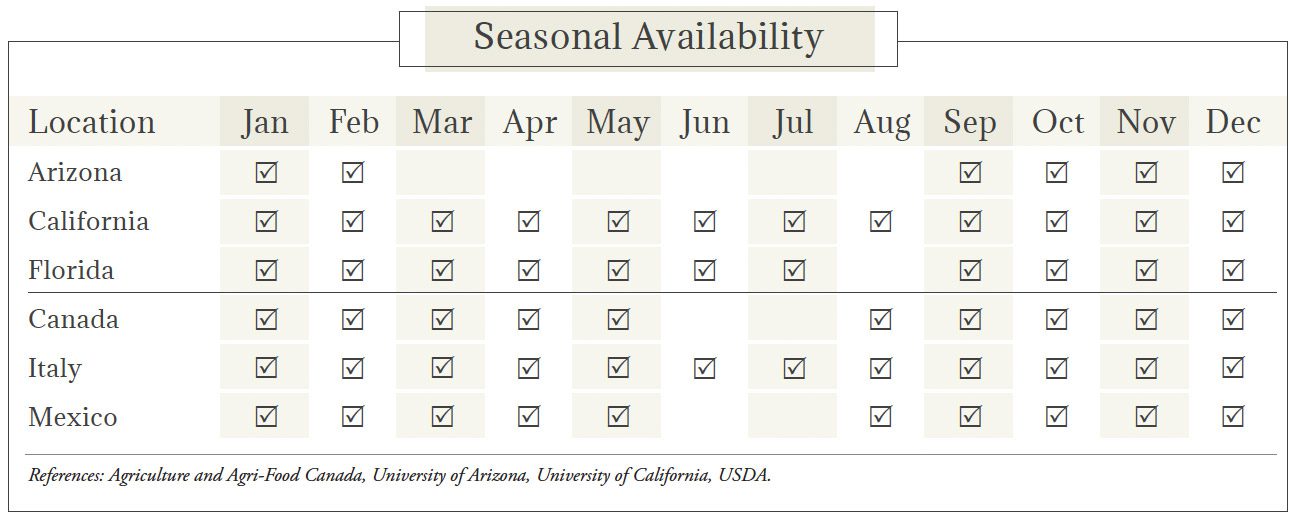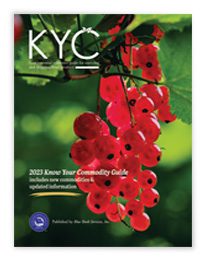Broccoli Rabe Market Summary


Image: Ba_peuceta/Shutterstock.com
Broccoli Rabe Market Overview
Broccoli rabe (pronounced “rob”) is a leafy green cruciferous vegetable related to the turnip. Also known as rapini, rappone, broccoli raab, rapa, Italian mustard, turnip broccoli, and Chinese flowering cabbage, the leafy green was reportedly brought to the United States from Italy in the late 1920s. Most likely descended from a wild herb that grew in the Mediterranean and Asia, today, broccoli rabe is grown across the globe and available throughout the year, with peak supplies in the late fall through early spring depending on location.

Types & Varieties of Broccoli Rabe
Resembling a mustard plant, the misnamed broccoli rabe has plentiful green leaves and small, broccoli-like buds on a thin stalk. It has a relatively bitter yet pleasant taste, with flavor ranging from nutty to peppery, though cooking can tame its sharpness. The plant’s bright leafy greens and closed flower buds and stems are edible. Although it should not be consumed raw, broccoli rabe is often sautéed, steamed, braised, or stir-fried. The vegetable is used in many popular Italian, Chinese, and Portuguese dishes. Broccoli-raab fall and broccoli-raab spring are the two primary types. While fall varieties bud earlier than spring, the two are basically the same. Varieties include Rappone, Rapa, Quarantina, Sessantina, Spigariello, and Super Rapini.Cultivation of Broccoli Rabe
With the same growing season as broccoli, rapini does best when planted in mild climates during cooler months, typically in late summer, fall, or winter. The plants may endure a light frost but will not survive hard freezes. Broccoli rabe can be planted from seed or transplanted. Although the vegetable will grow in a variety of soils, it thrives in well-drained, fertile loams. Plants do best in full sun but can tolerate some shade. Within 40 to 60 days of planting, broccoli rabe is ready to harvest. Before the flowers bloom, the leaves and seed stalks are harvested. The greens should be cut at ground level when plants are approximately 10 to 15 inches tall, before buds open. If a couple leaves are left unbroken on the plant, they may sprout again two or three times.To prepare for market, harvested leaves and flower stalks are tied in bunches, much like collard, mustard, or turnip greens.
Pests & Disease Affecting Broccoli Rabe
Broccoli rabe is vulnerable to a wide variety of insects and diseases similar to those that affect cabbage and broccoli. Pests that attack the plant include cabbage worms, flea beetles, and cabbage aphids, which lead to deformed leaves and sticky residue. The larvae of the cabbage root maggot also feed on roots, causing plants to wilt and eventually die. The diamondback moth caterpillar is also an issue for rapini, chewing small holes on leaves and damaging young plants. Common diseases include black rot, downy mildew, and other pathogens that affect cruciferous vegetables. Rapini is also susceptible to clubroot, which causes yellowing, wilting, and stunting of plants.


